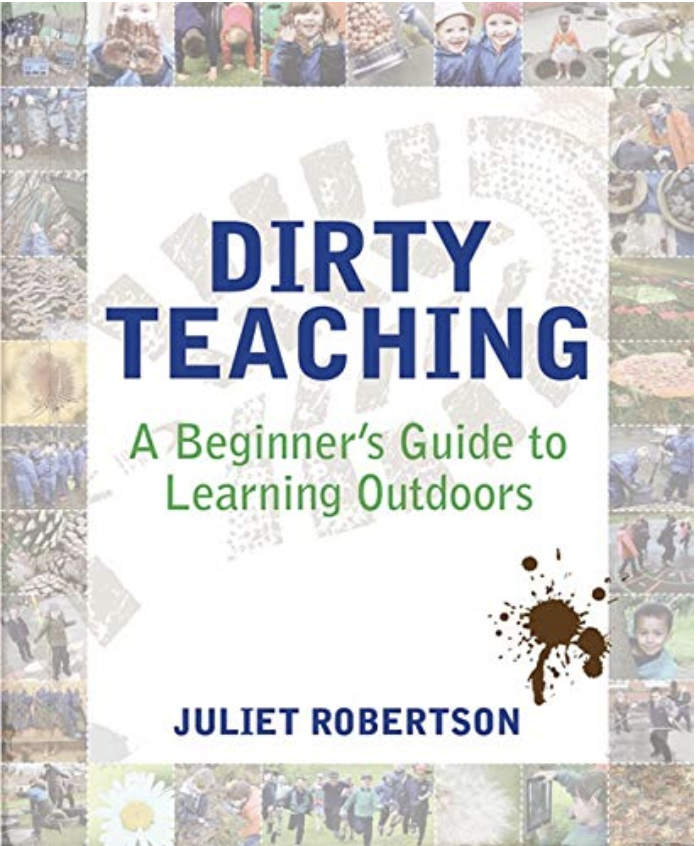When I first started my field experience in the classroom last semester I was so excited to learn that my mentor teacher did an outdoor class everyday. I am very interested in outdoor education because it helps students regulate in so many different areas. One of my passions is helping students connect to nature. My mentor teacher once told me that we should teach children to love our Earth so that they naturally want to protect it, rather than scaring them into protecting it. This line stuck with me the most, and one of my goals as an educator is to attempt this.
One amazing resource I have found that goes above and beyond in teaching children about the outdoors is a book I bought from Amazon called Dirty Teaching: A Beginner’s Guide to Teaching Outdoors by Juliet Robertson. This book showcases all the benefits of teaching outdoors and also provides a huge variety of engaging activities.

The book description on Amazon provides all the topics that are covered in this book: “Topics covered include: forest schools, learning outside the classroom, outdoor education, nature activities, caring for the environment, play in schools, investigative play, urban outdoor activities, problem-solving, creative thinking and strategies for supporting curriculum objectives.” (Dirty Teaching on Amazon)
Make sure that the children are getting free play as well. This is how children learn to socialize, develop independence, improve physical coordination, and have a good time without adult direction.
(Dirty teaching, pp. 12)
This quote explains how outdoor free play is important in an outdoor class. My mentor teacher shared with me her thoughts on what an outdoor classroom should look like and one of these aspects was free play. Instead of getting involved, my mentor teacher would observe from a distance and watch as students learn to strengthen their relationships and solve problems. I believe that doing this outdoor is a great way to do this because student’s moods are improved when they are outdoors so their cognitive and social skills may be working well.
The book dirty teaching suggests using songs and music as a stimulus in outdoor learning. Some ideas for this are creating a music playlist for when you are outside with your class, creating an outdoor music wall, and creating musical instruments outside
(dirty teaching, pp. 81-82
Outdoor education can mean so many things. My mentor teacher last semester taught me that there are three aspects to outdoor learning: learning in nature, learning about nature, and learning for nature. Learning in nature refers to the curriculum and doing lessons outdoors. When I saw this quote in Dirty Teaching I was blown away by the fact I have only ever thought about doing science and PE outdoors. I had never thought about taking on music lessons outdoors. I absolutely love the idea of creating music outside in nature because I believe it helps children connect to themselves, music, and nature. Creating musical instruments outside seems like a fantastic idea to me. I even looked up some outdoor music walls and this is what I found:


Leave a Reply
You must be logged in to post a comment.